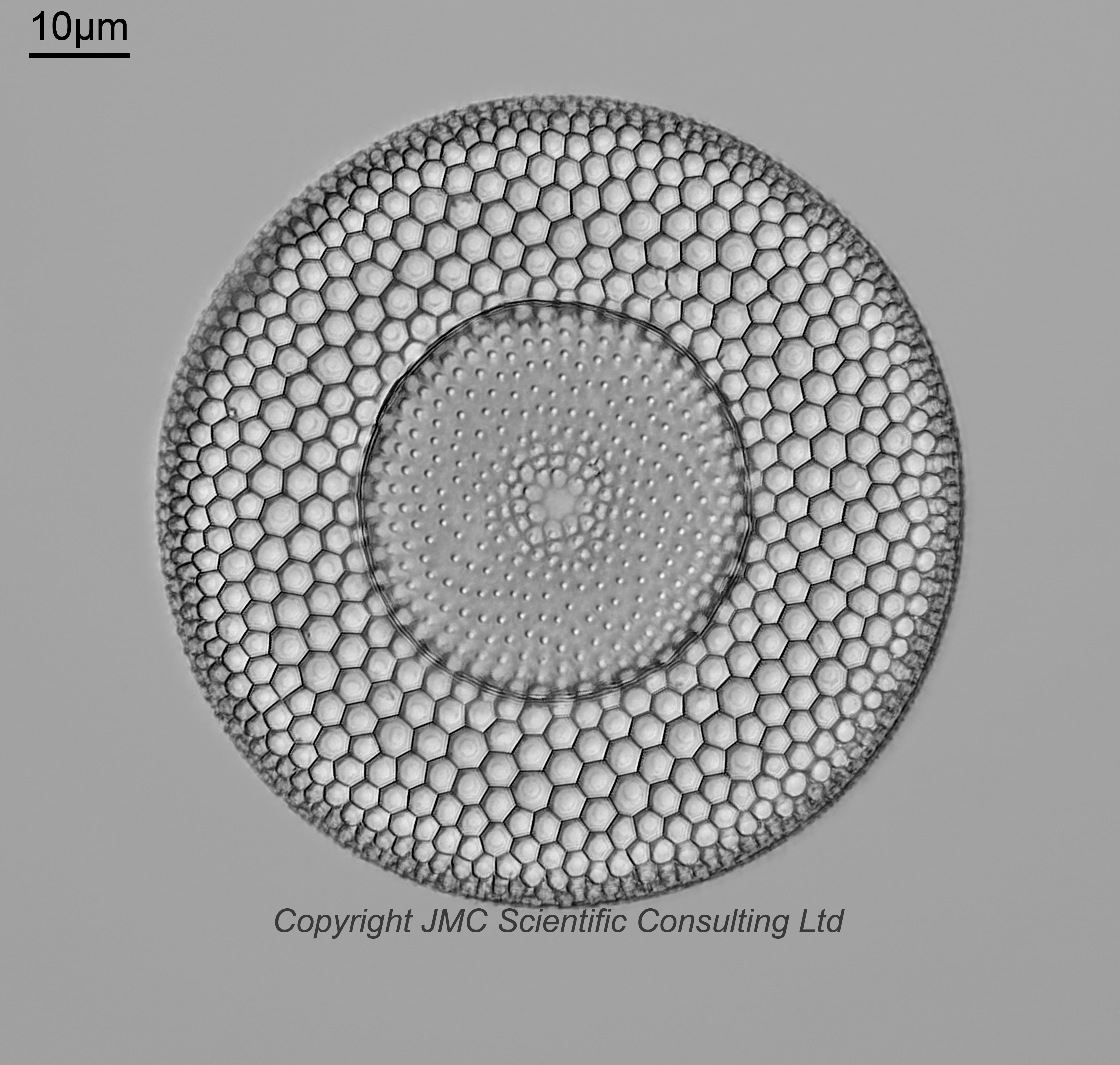










A strew slide from Richmond, Virginia, USA. Wide range of species present. Prepared by Samuel Henry Meakin, and mounted in Styrax. Olympus BHB microscope using 450nm LED light. 63x Leitz Pl Apo 1.4 objective, oil immersion. Olympus Aplanat Achromat condenser, oil immersion, oblique lighting. 2.5x Nikon CF PL photoeyepiece. Monochrome converted Nikon d850 camera. Images stacked in Zerene (Pmax).
For identification of the diatoms I used various sources including the following;
Miocene Diatoms from Richmond, Virginia, George W. Andrews, Journal of Paleontology, Vol. 60, No. 2 (Mar., 1986), pp. 497-538 (42 pages).
Andrews, G.W. (1976). Miocene marine diatoms from the Choptank Formation. United States Geological Survey Professional Paper 910: 1-41, 2 figures, 1 table, 7 plates.
Fossil marine diatom resting spore morpho-genus Xanthiopyxis Ehrenberg in the North Pacific and Norwegian Sea, Itsuki Suto, Paleontological Research, 8(4) : 283-310.
Some identifications are more tentative than others, so keep that in mind.
Actinocyclus octonarius. Sure on this one. 30 images stacked.
Actinoptychus senarius. Various examples with slightly different appearances, which seems to reflect the variation seen in the literature, although I have left one with a question mark.
Hyalodiscus laevis. Fairly sure on this one. 29 images stacked.
Xanthiopyxis sp.. This could maybe be Xanthiopyxis lanceolatus. While I am fairly sure this is a Xanthiopyxis, the ID as X. lanceolatus is very tentative. 19 images stacked.
Unknown. This fragment I am not sure about (hence calling it ‘unknown’), but I included it as I like the look of it. Single, unstacked image.
Eucampia virginica. Fairly sure on this one. 19 images stacked.
Craspedodiscus coscinodiscus. Sure on this one. 27 images stacked.